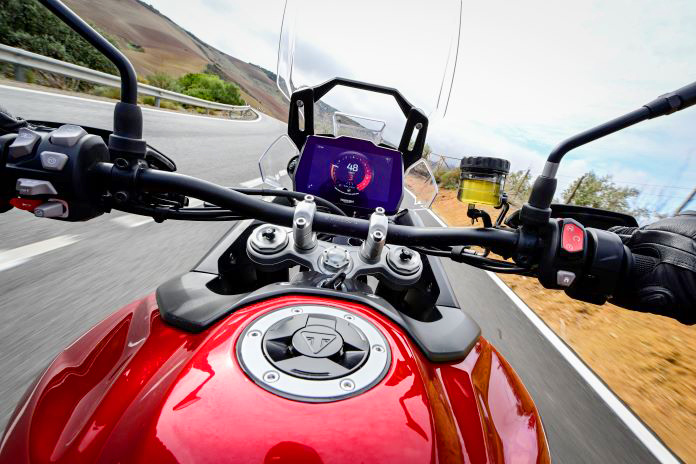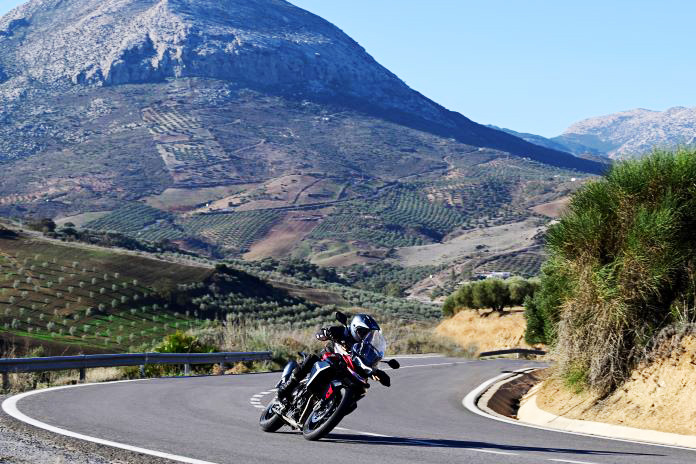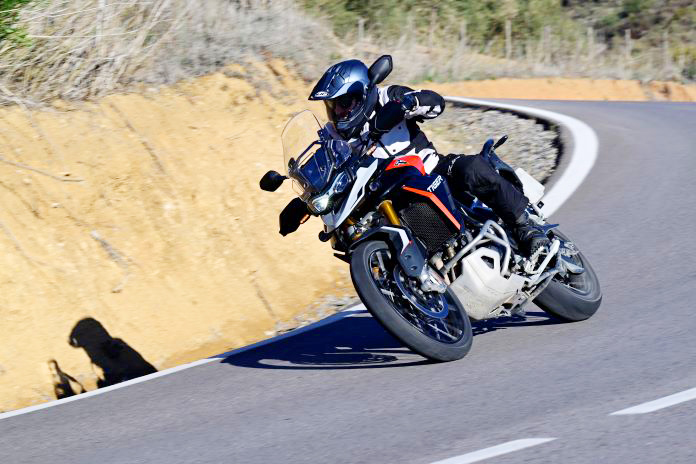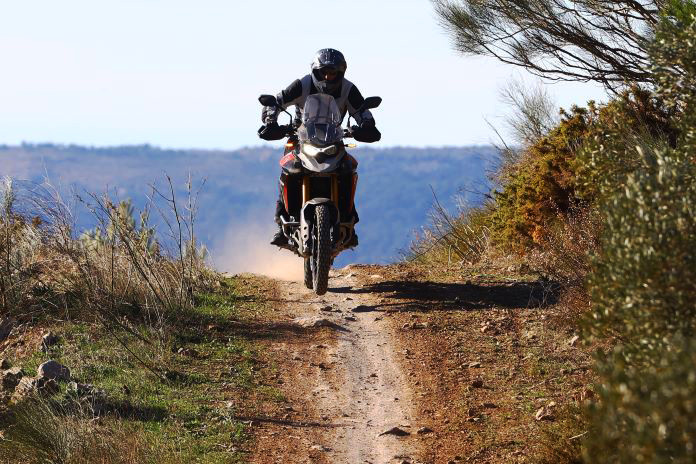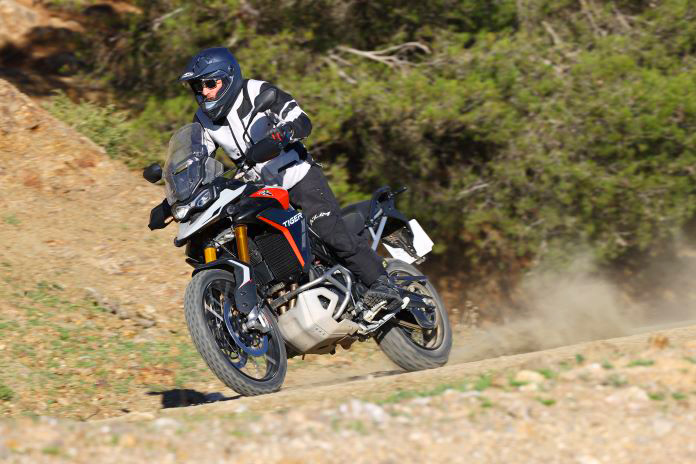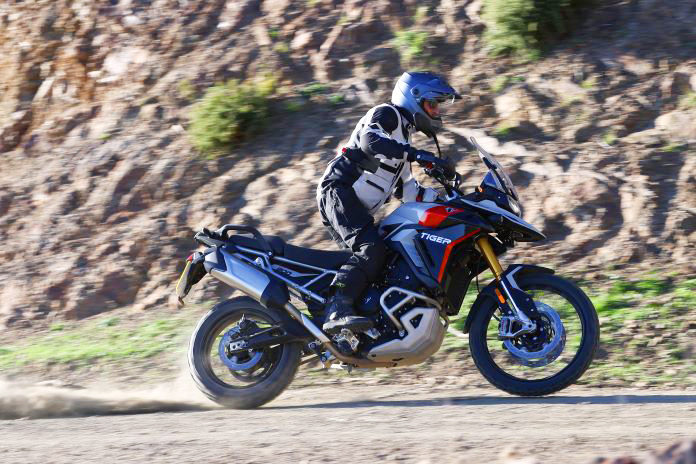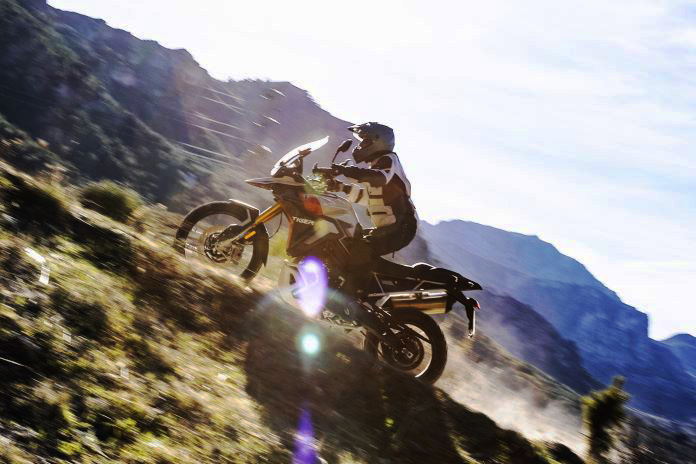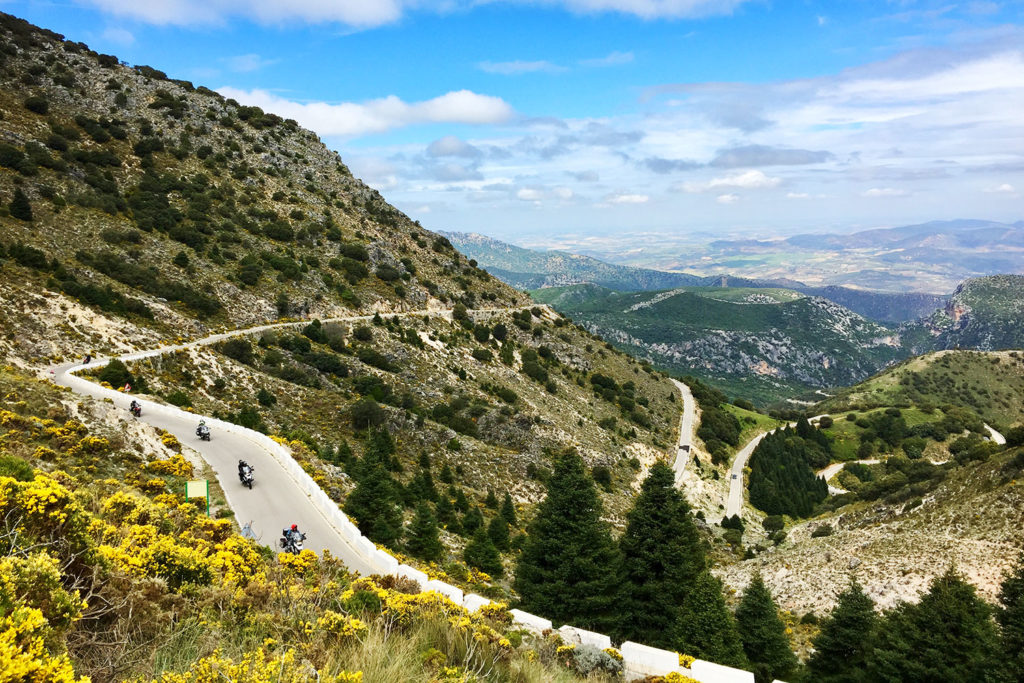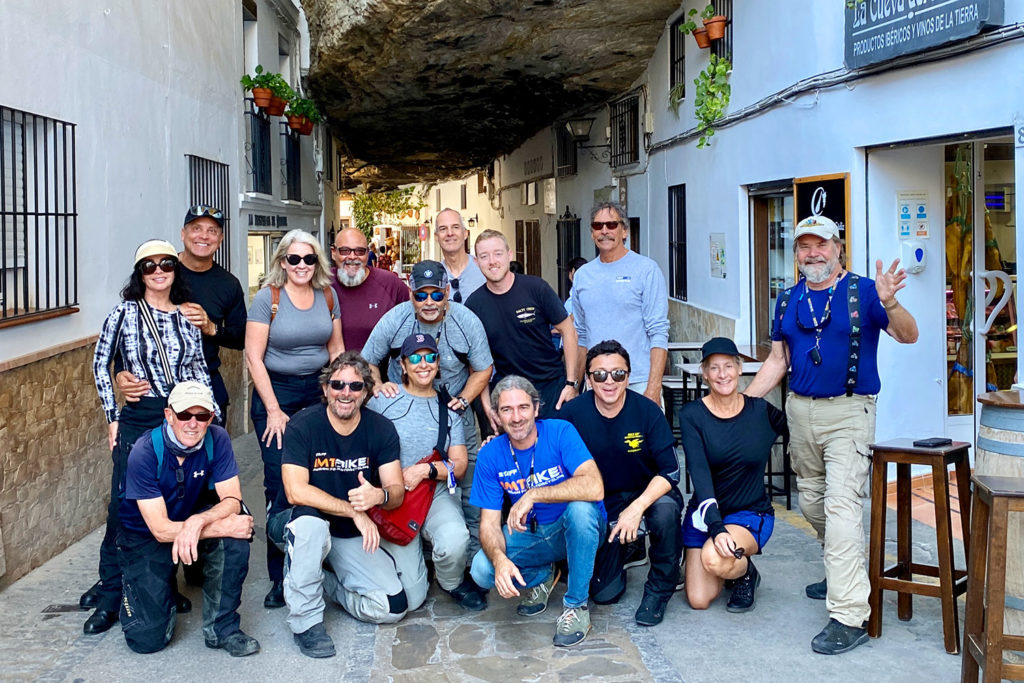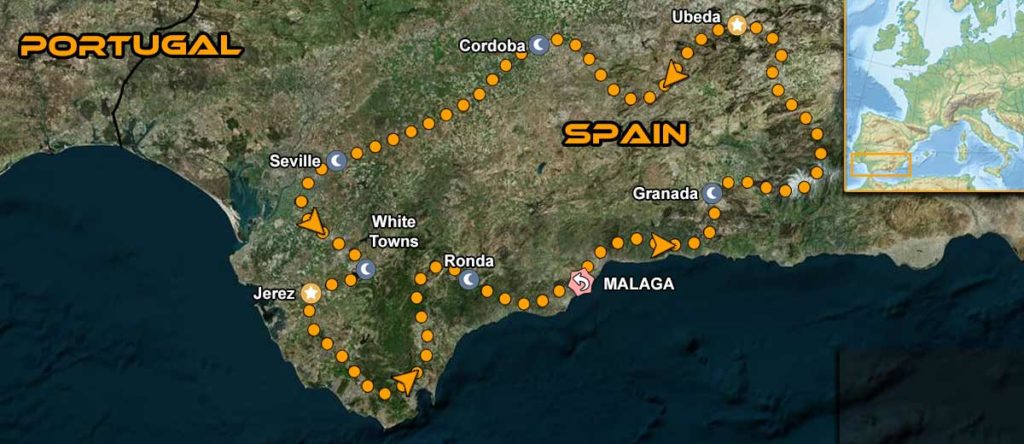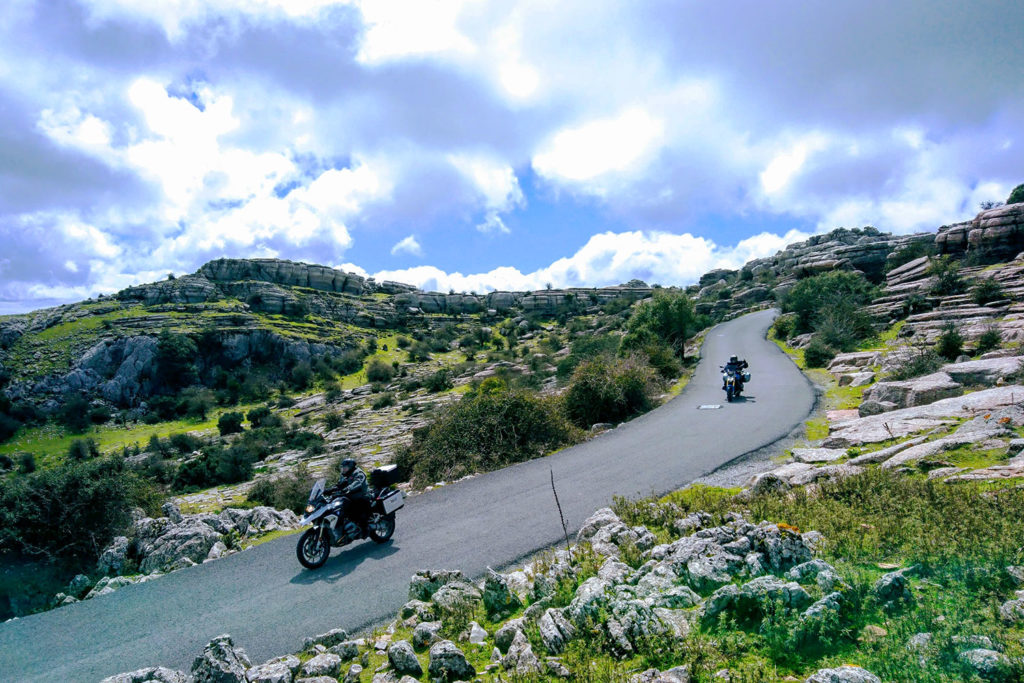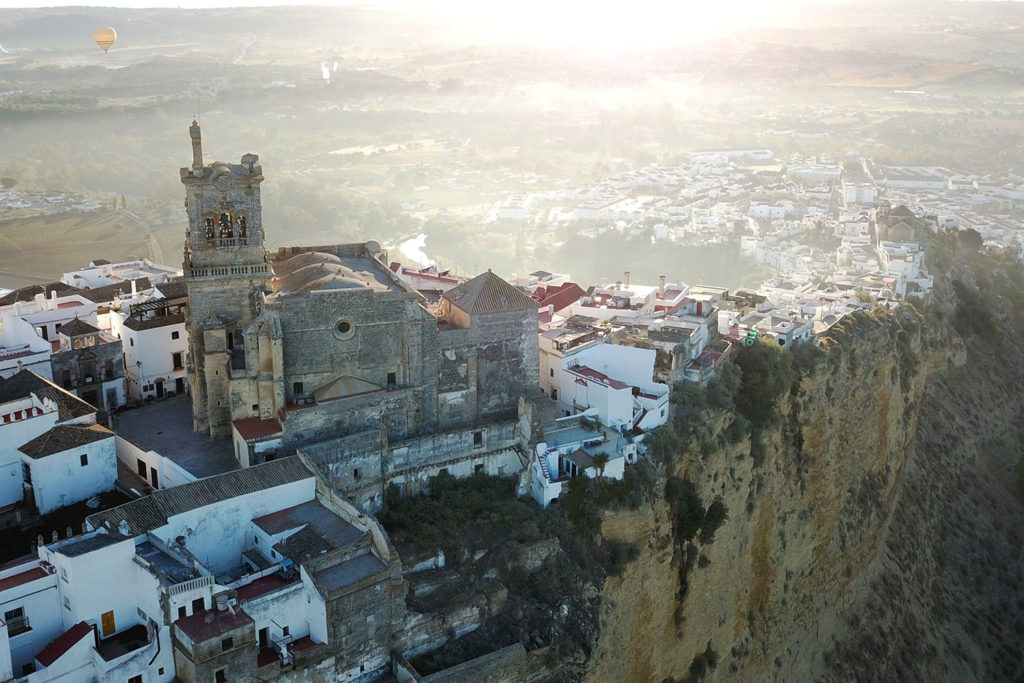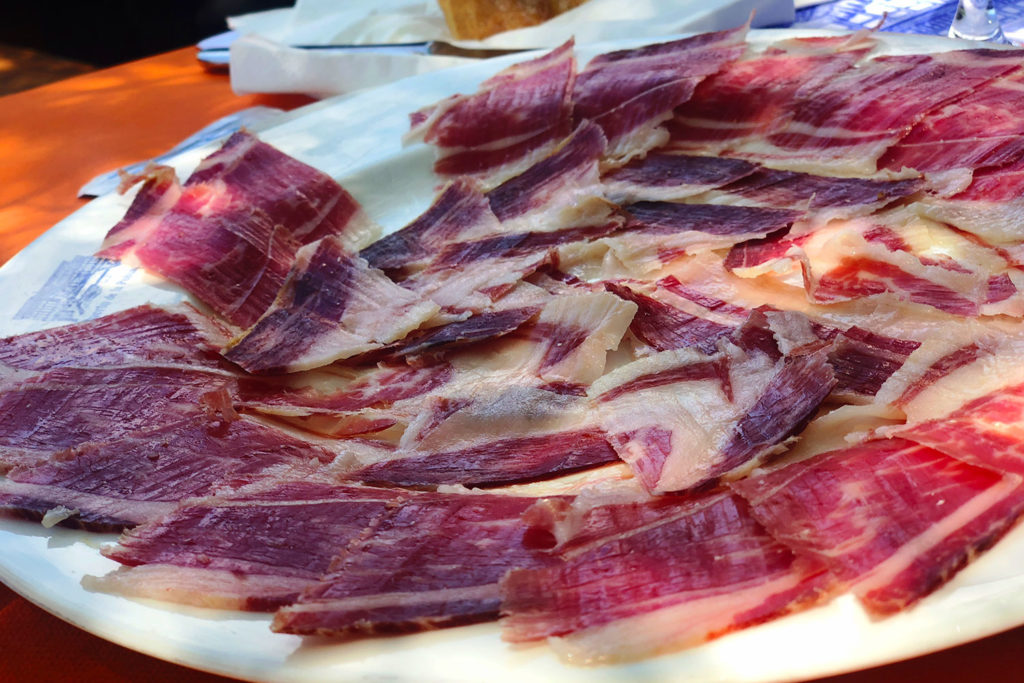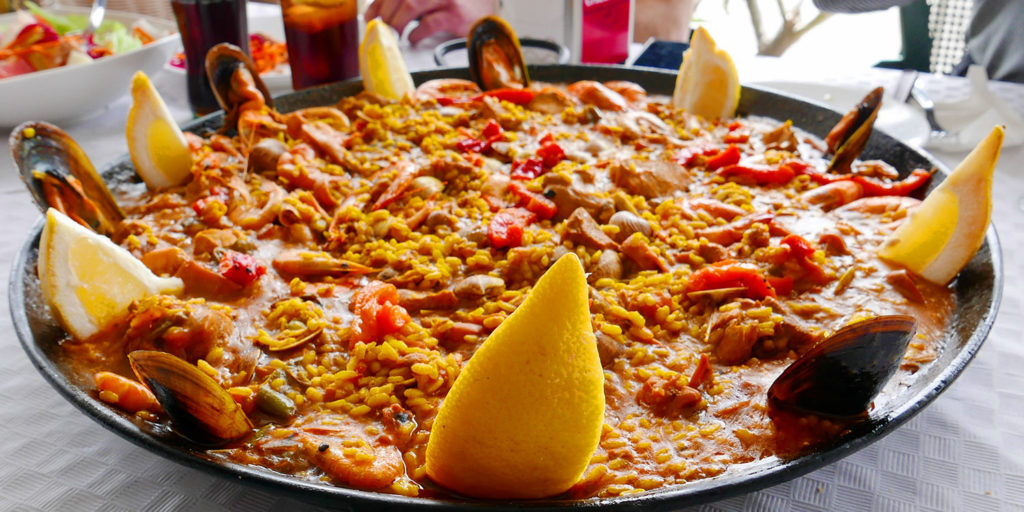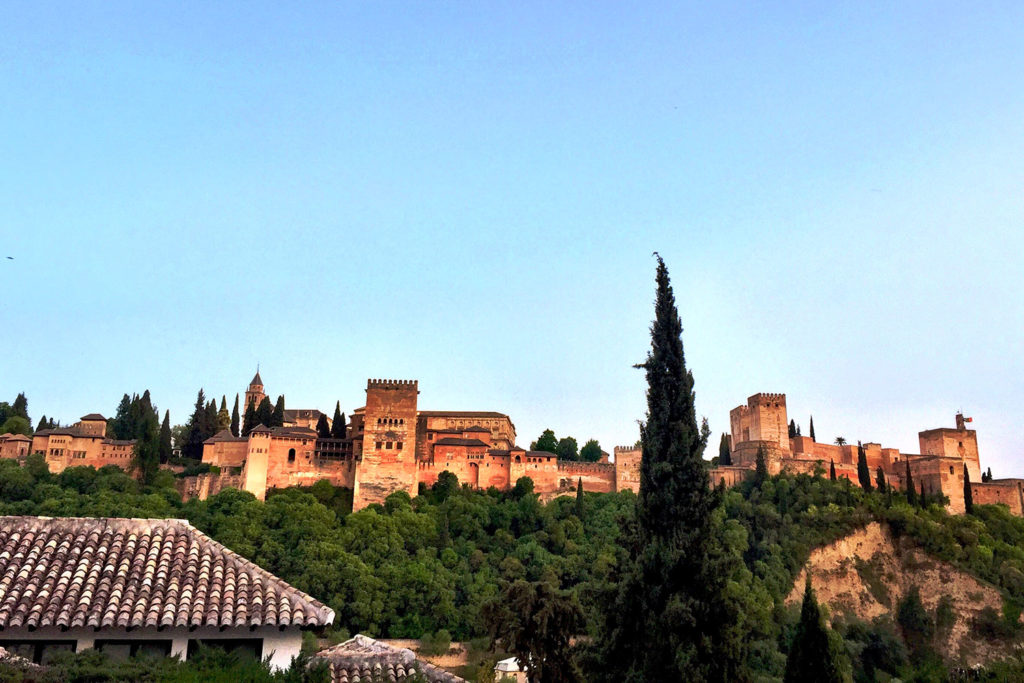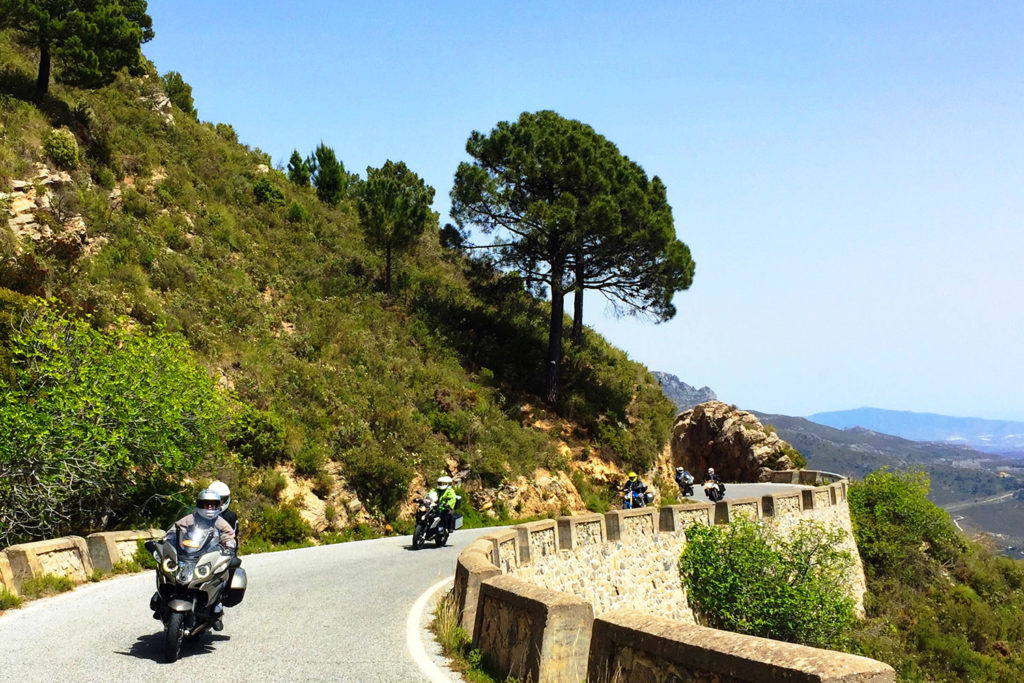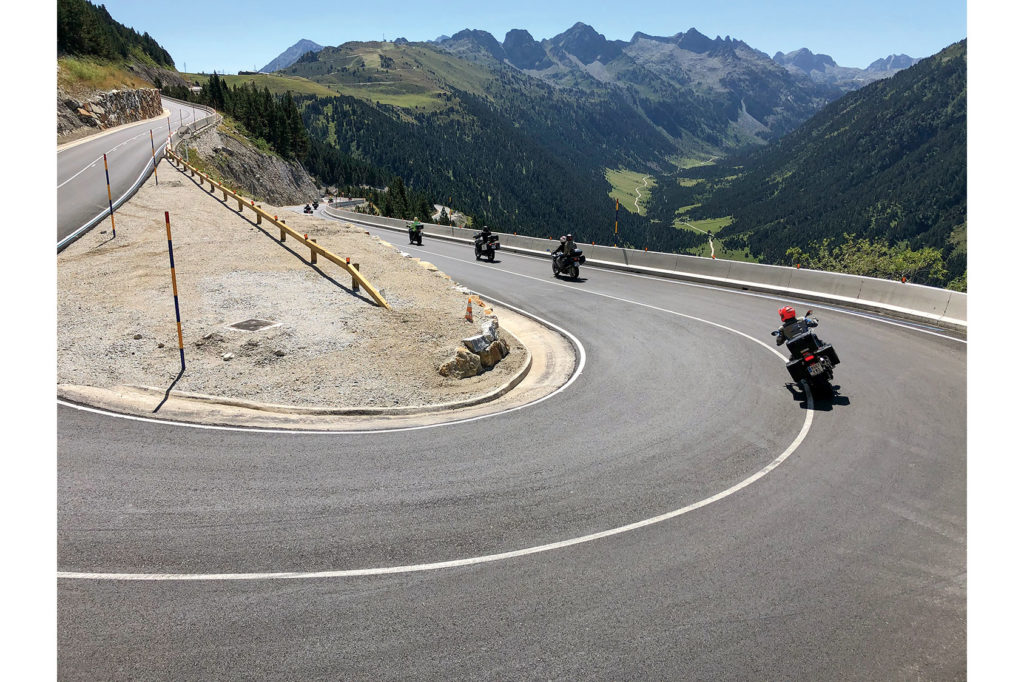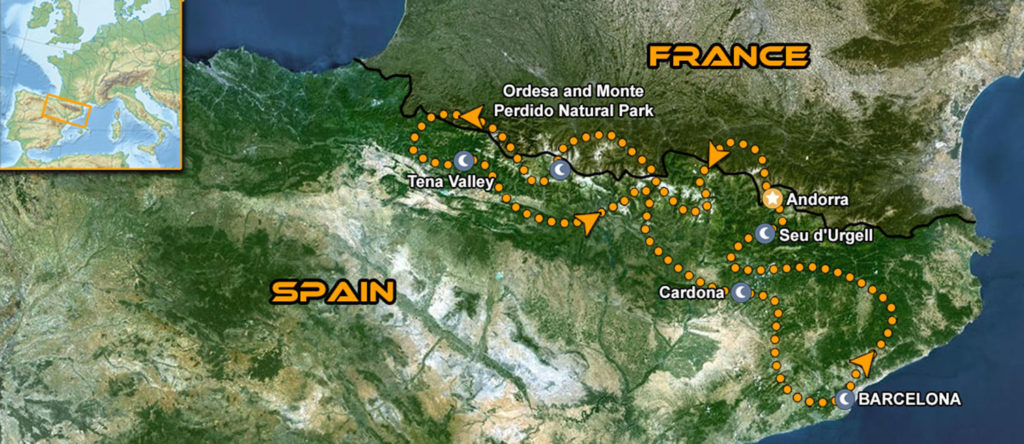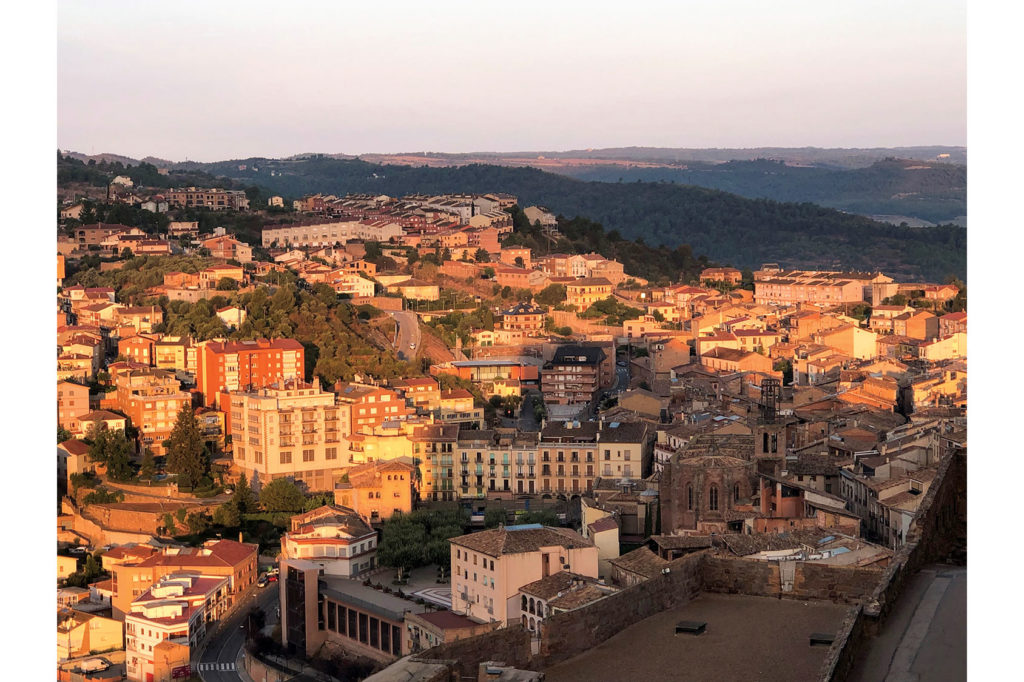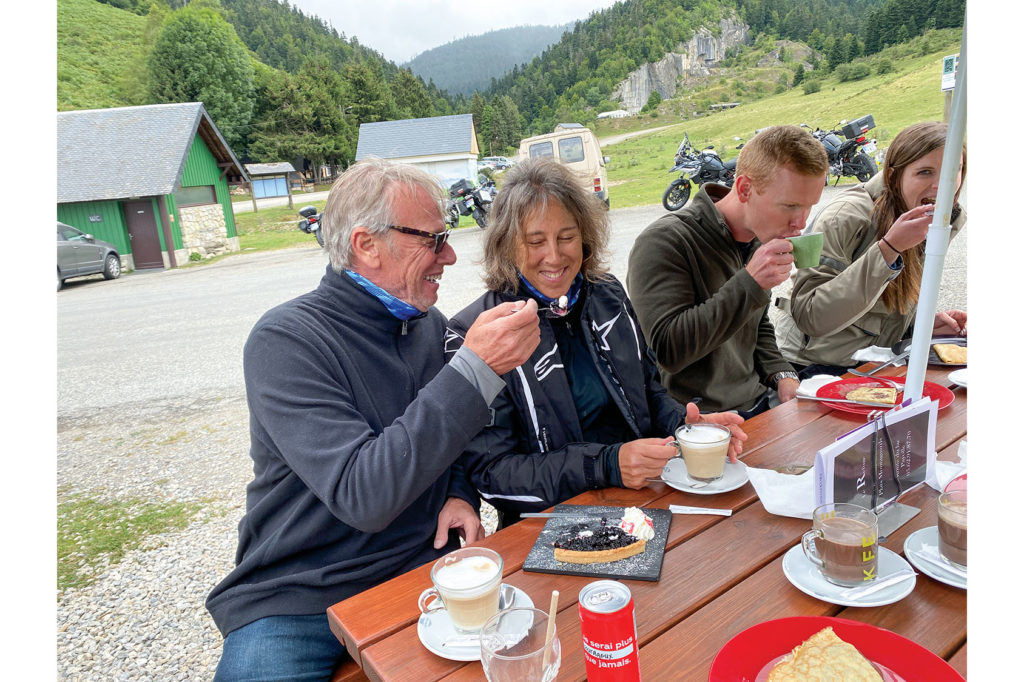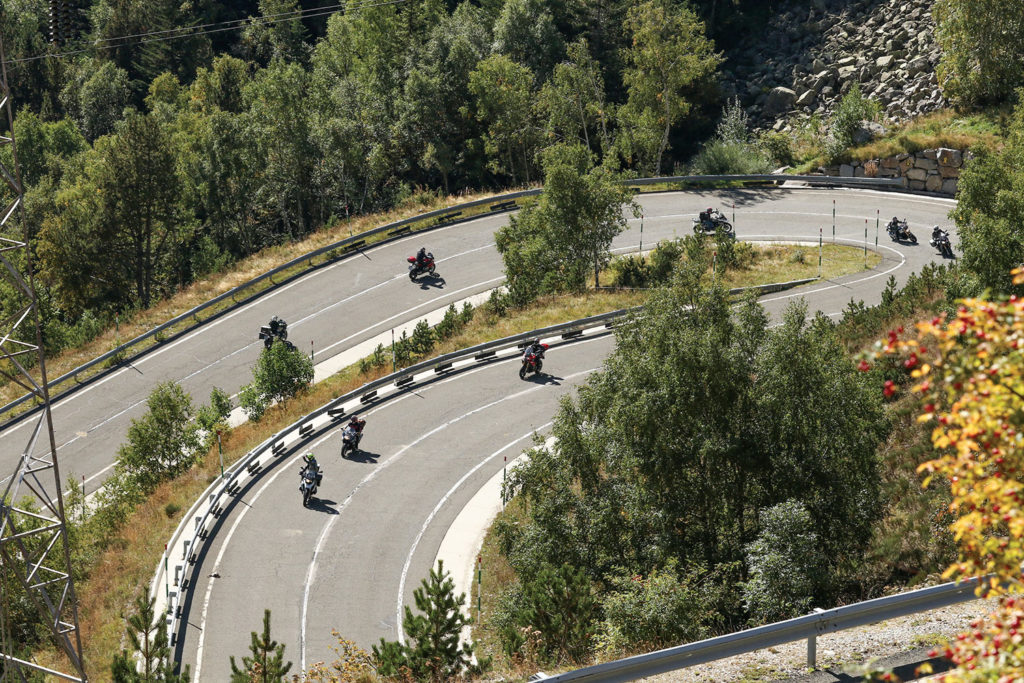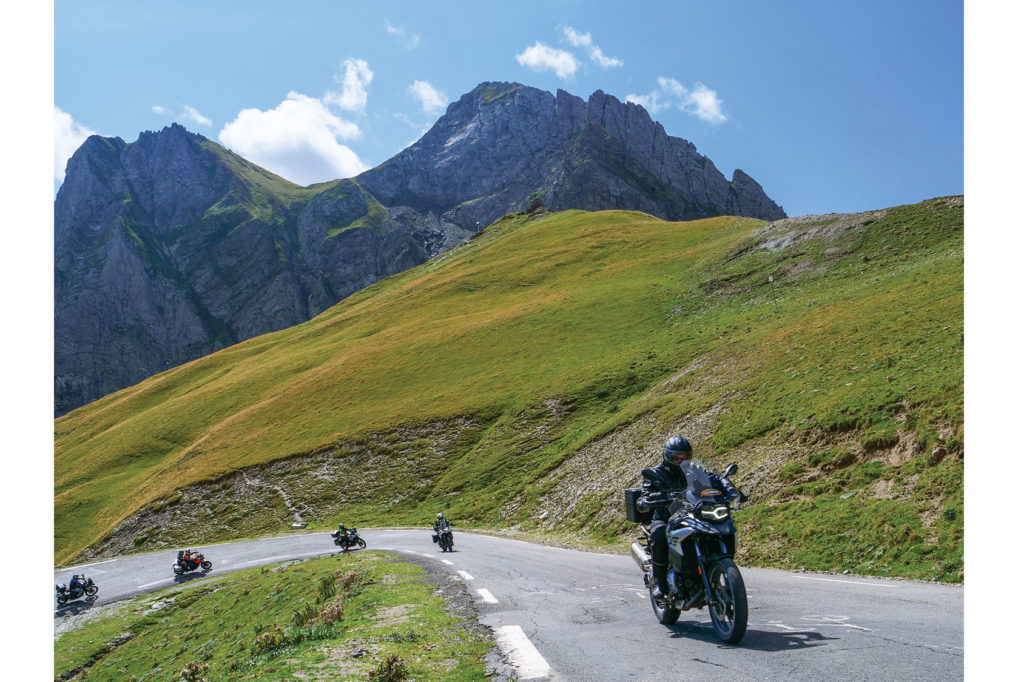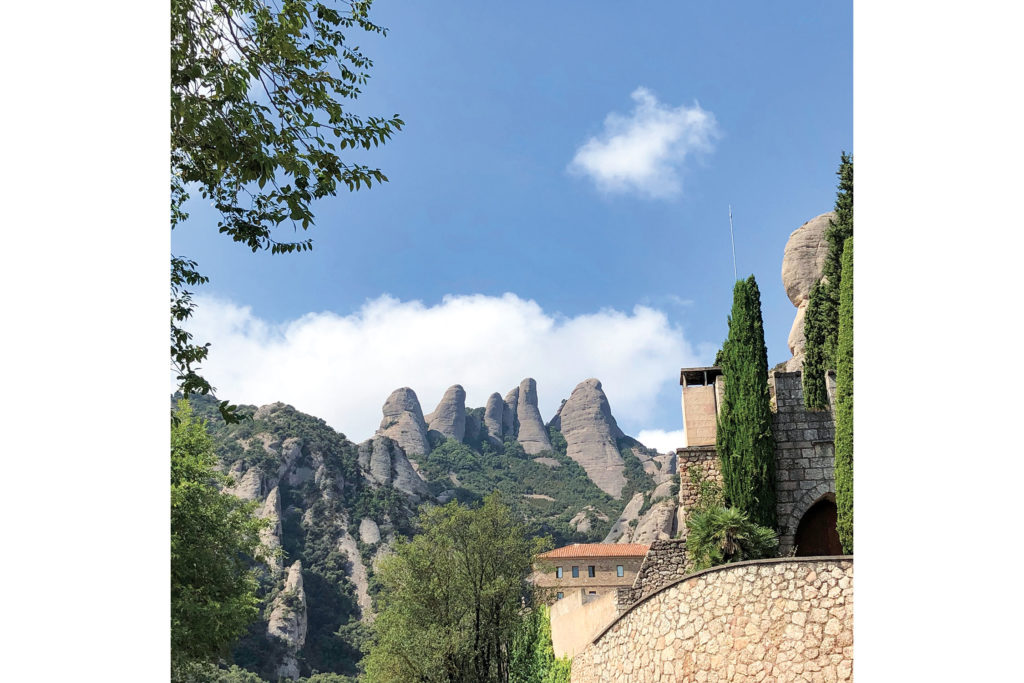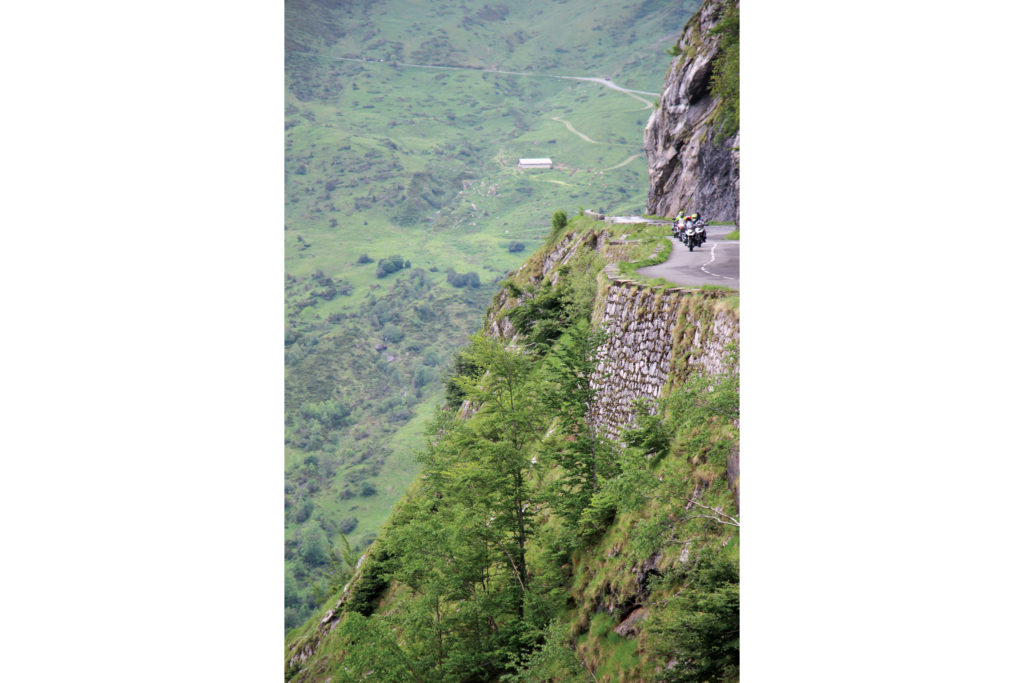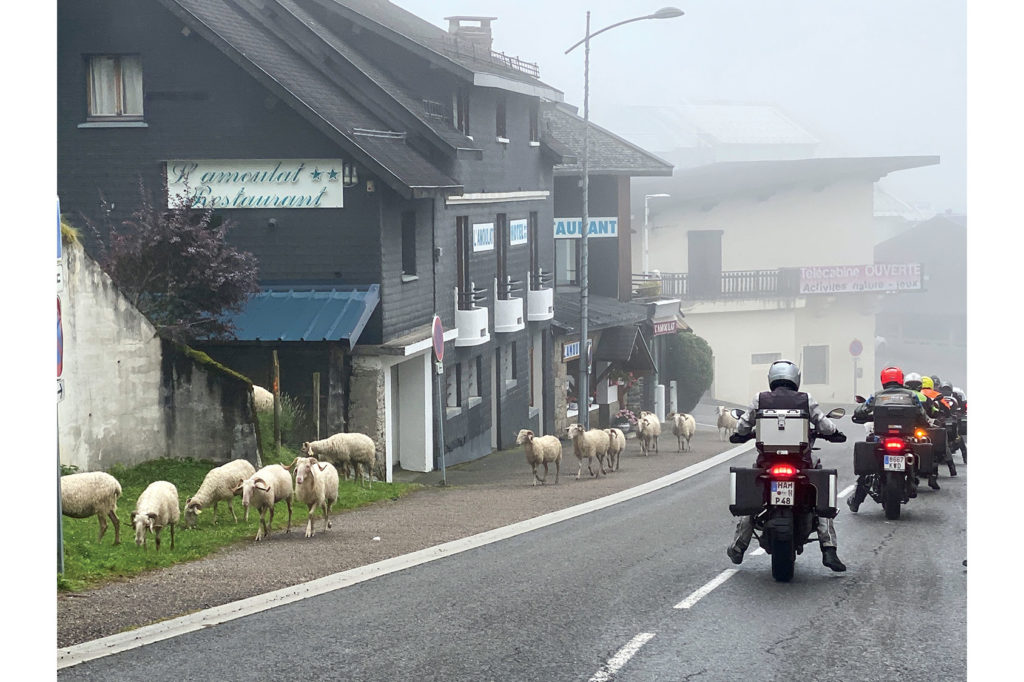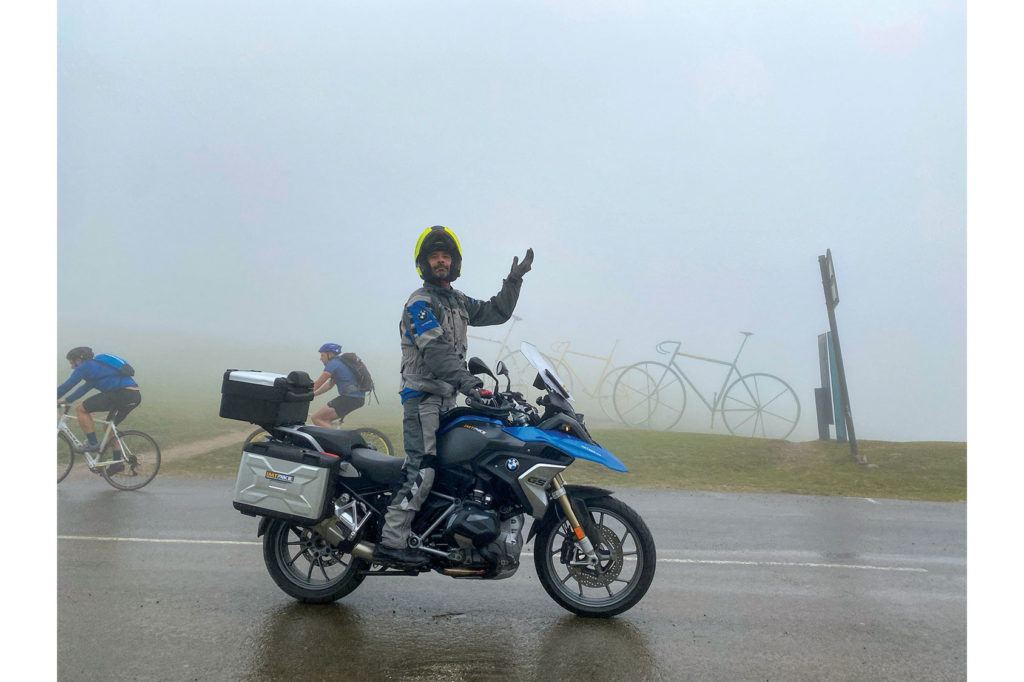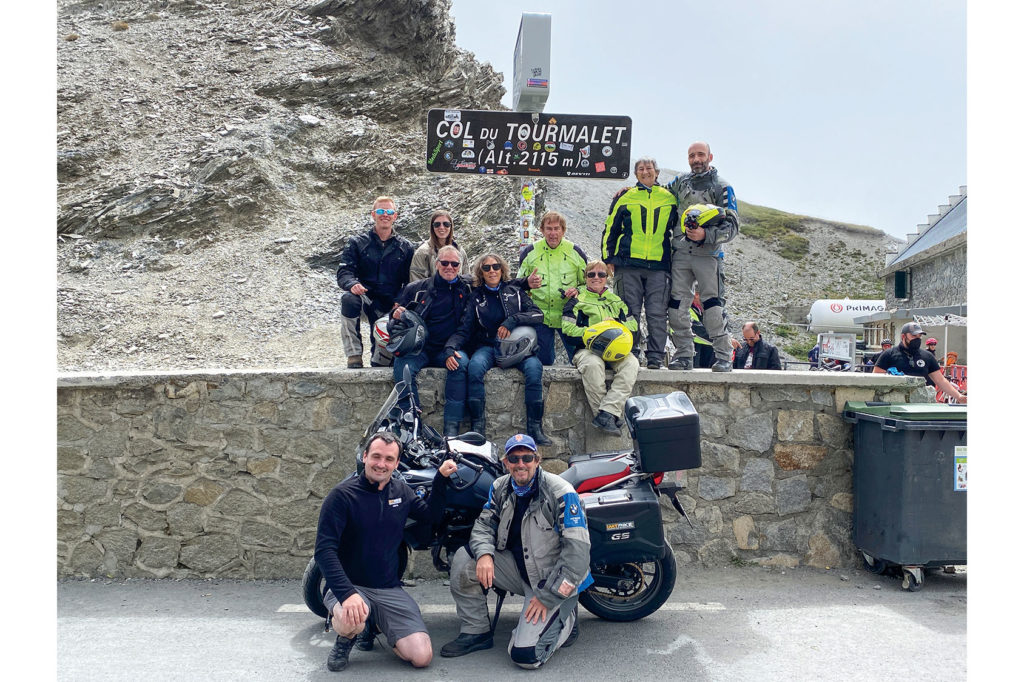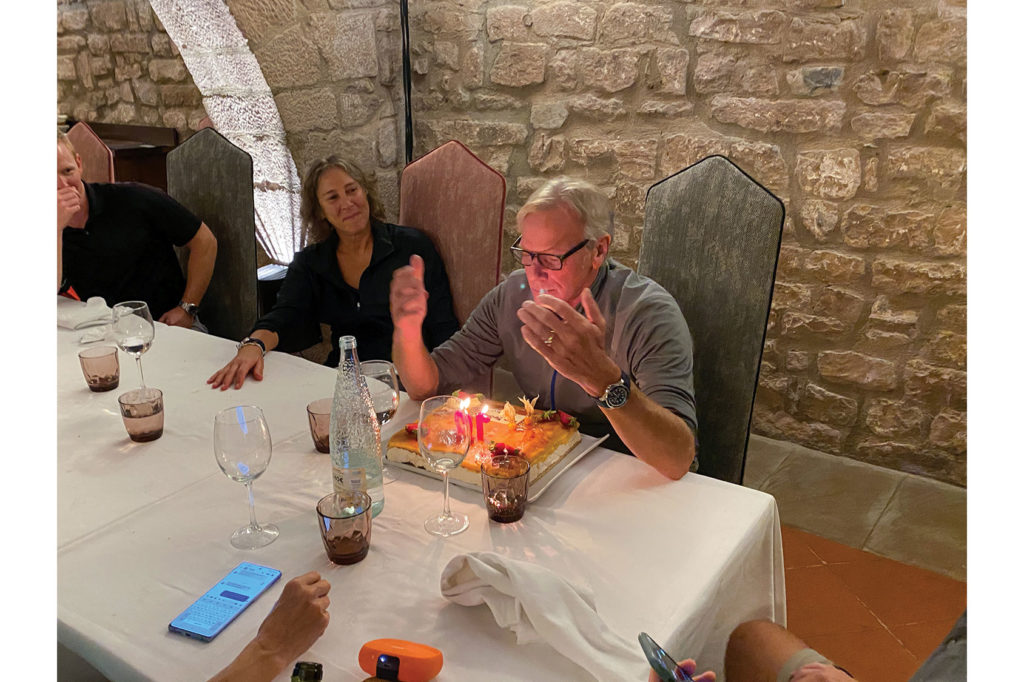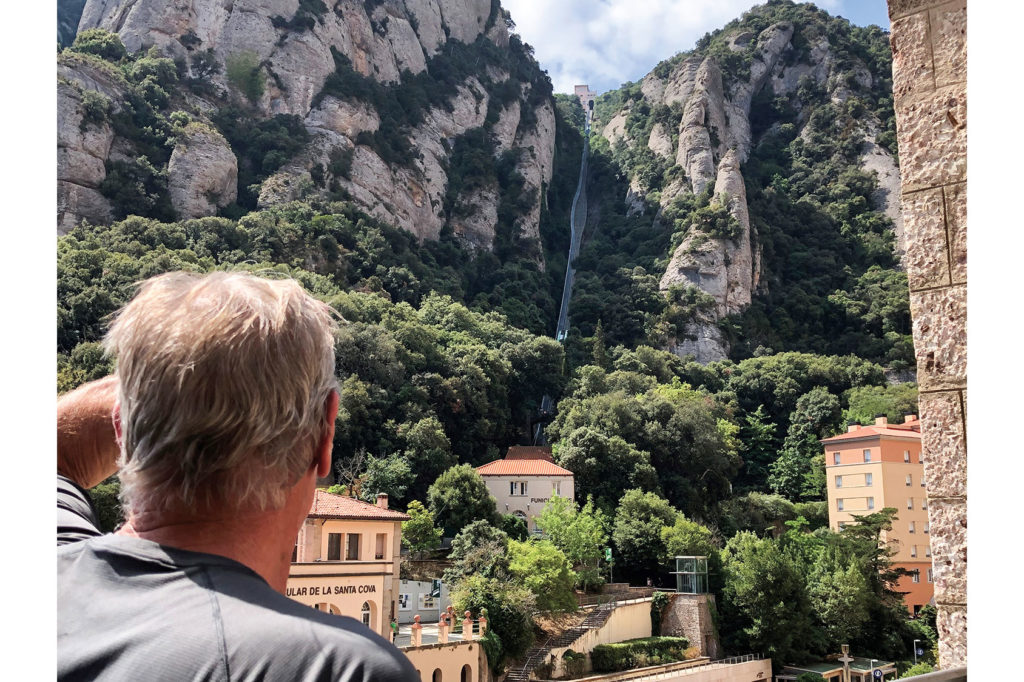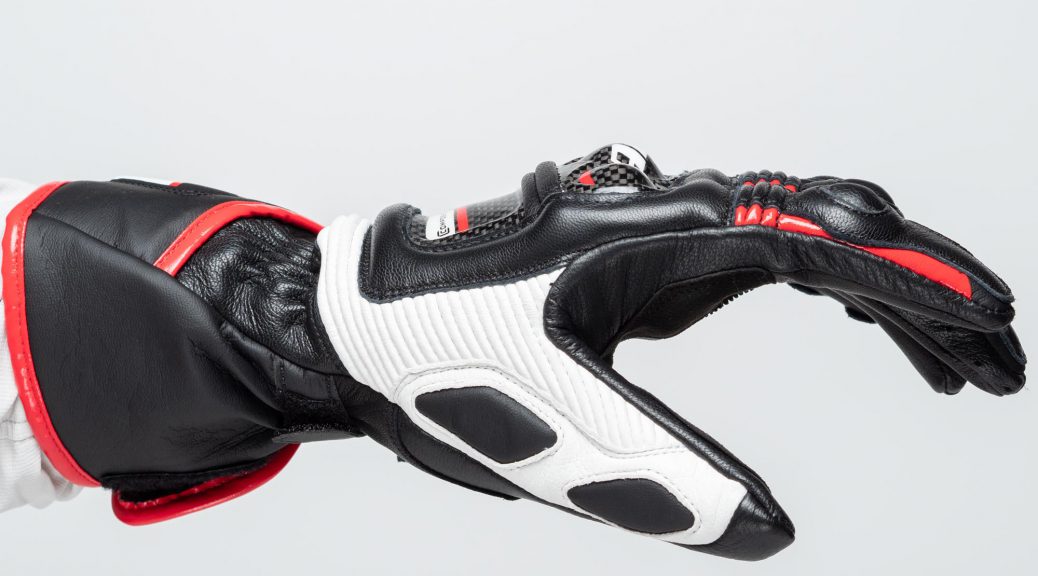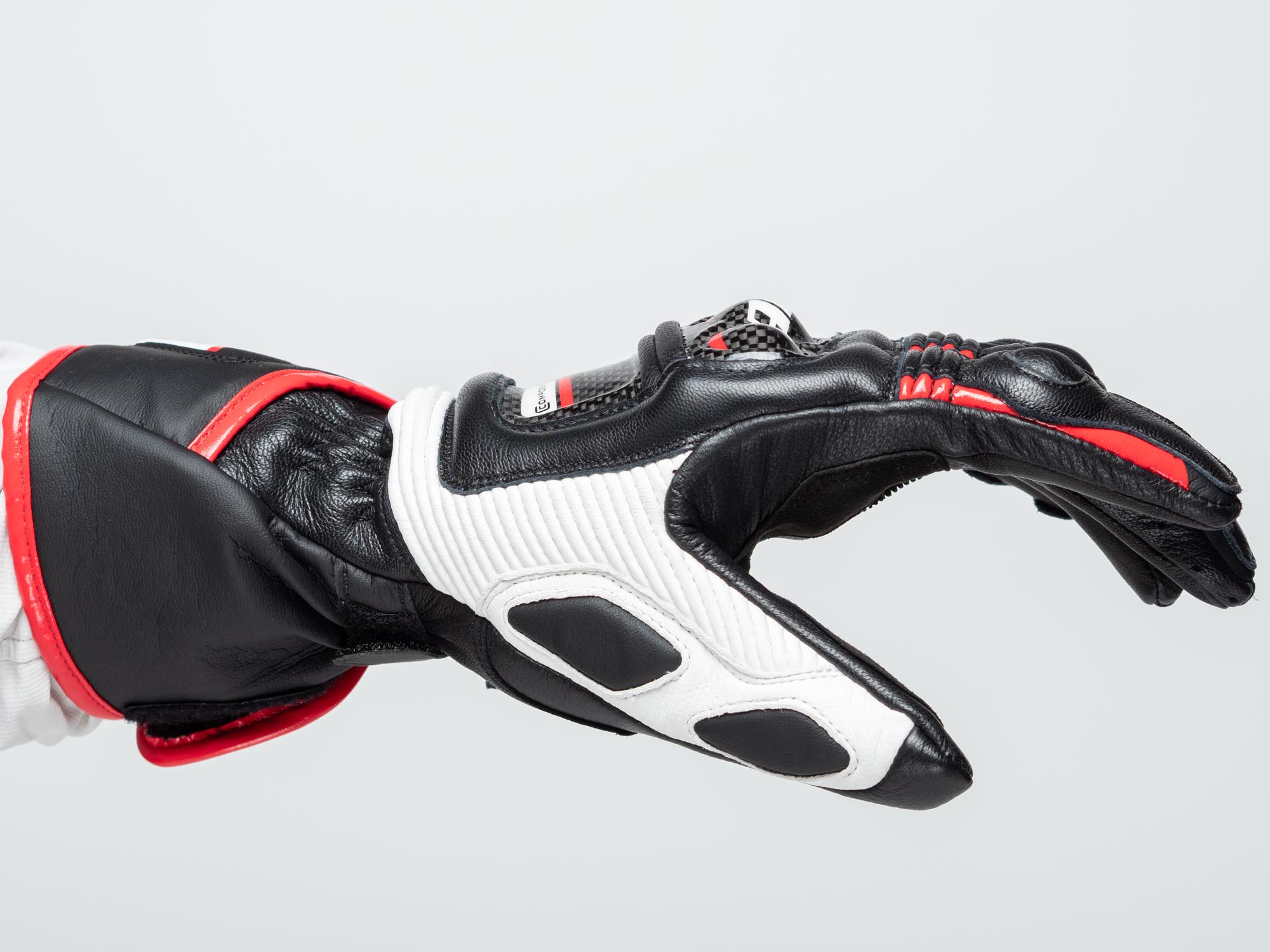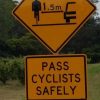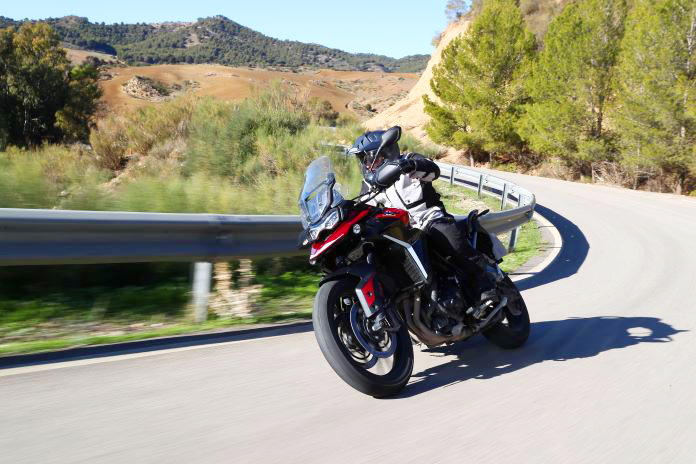
Middleweight adventure bikes are perhaps the hottest segment in motorcycling – even if the definition of “middleweight” keeps creeping upward. It’s why Triumph has given its lauded Tiger 900 a revamp just four years after its introduction, gaining a 13% boost in power from its inline-Triple, plus new TFT instrumentation, sharper styling, and updated electronics. The pursuit of perfection at Triumph continues.
The Tiger 900 slots into a market full of a highly diverse crop of ADVs, and Triumph is cleverly aiming for two types of customers with the Tiger 900s. The GT and GT Pro versions skew toward the sport-touring market – let’s call it the sport-adventure category. Bikes in this class typically use cast-aluminum wheels with 19-inch fronts. Unchanged for 2024 but still in the lineup is the road-biased Tiger 850 Sport.
Related: Triumph Tiger 850 Sport Road Test
The Tiger 900 Rally Pro is intended for tackling off-road terrain, using a 21-inch front tire and riding on wire-spoke wheels. It will do battle with bikes like the Ducati Desert-X and the Austrian stablemates of KTMs and Husqvarnas in their various middleweight guises.
Related: 2020 Triumph Tiger 900 GT Pro and Rally Pro First Ride Review
All Tiger 900s come equipped with cruise control, heated grips, machined adventure footpegs cushioned by removable rubber inserts, and four ride modes: Rain, Road, Sport, and Off-Road, the latter switching off rear ABS. Pro models get a customizable Rider mode and enjoy clutchless up- and downshifts with a quickshifter, as well as a centerstand and tire-pressure monitoring. Triumph no longer offers the Rally in a non-Pro variant nor the GT Low.
Related: Triumph Tiger 900 GT Low Tour Test Review
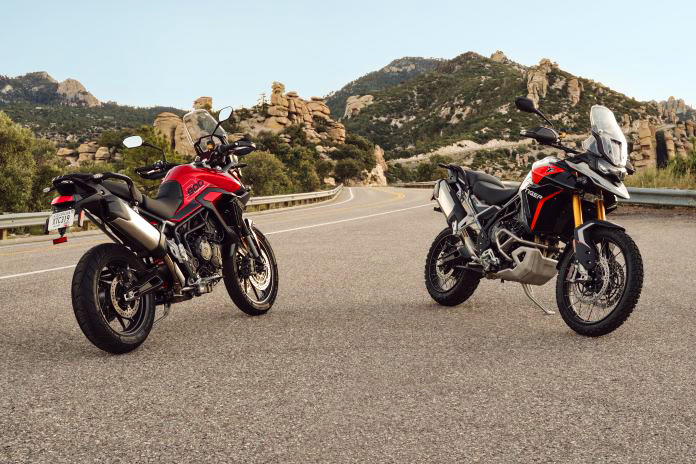
The existing Tiger 900s were already admirable machines that are capable, versatile, and stylish – more than 45,000 have been sold. At the new bikes’ presentation, Triumph boiled down the new Tigers’ key points: more performance, capability, comfort, and attitude.
To give us a chance to put the Tigers through their paces, Triumph invited us to southern Spain for two days of riding. The first day would be entirely on asphalt in the hills north of Málaga, while the second day was spent almost entirely off-road on some amazingly twisty and scenic trails in El Torcal de Antequera nature preserve.
Warm-Up | Triumph Tiger 900
Triumph treats its 900 Pro buyers to heated seats and grips as standard equipment, both godsends when it’s chilly like it was when we set off shortly after dawn. Fingers were kept cozy on heating elements behind the standard handguards, while my buns got so toasty I shut down the seat heat after only an hour. Surely I would’ve survived without the extra heat, but a comfy rider is a happy rider.
Another aspect that makes a happy rider is more power – I’ve never met an engine that wouldn’t be better with a bump in ponies, assuming low-end grunt isn’t marginalized. Kudos to Triumph for redesigning its 888cc engine just four years after it debuted, giving it 13 extra horsies for a peak of 107 hp – two higher than KTM’s venerable 890. This will surely please my friend Glenn, who bought a GT Pro on my recommendation a few years ago. His only complaint is that he wished it had more oomph when he was two-up with his wife.
Engineers made several major tweaks to unleash more power, including a new cylinder head with larger inlet ports and optimized oval exhaust ports working in partnership with higher-lift camshafts. New pistons bump the compression ratio to 13:1. Harvesting additional low-end power are 15mm longer intake trumpets. Peak torque is up 2.2 lb-ft to 66.4 at 6,850 rpm.
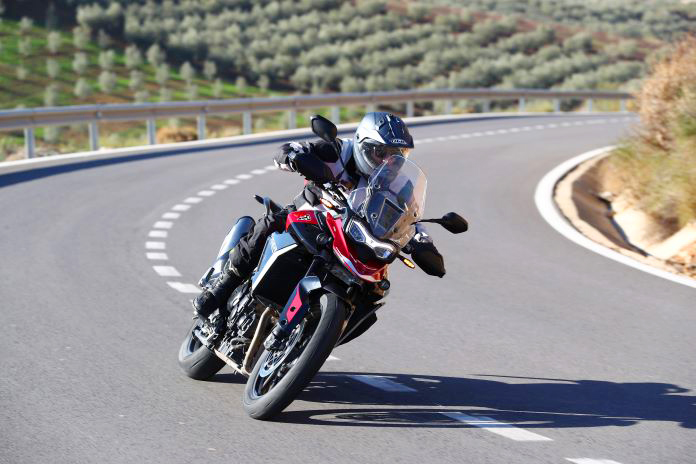
From behind the bars and if you’re not in much of a hurry, Triumph’s unique T-plane Triple doesn’t feel much different. A dyno chart reveals the old engine has an imperceptible edge in grunt until 4,500 rpm before the new engine boasts clear superiority the rest of the way to redline, especially around 7,500 rpm when the previous motor begins to peter out and the new one continues surging to its 9,500-rpm peak. There was nothing wrong with the previous powerplant, but this new one is clearly superior and adds a compelling upper-rev swell the old mill lacked.
Adding to the impression of speed is the pleasantly authoritative bark from a lighter and freer-flowing exhaust system, which somehow gets by with the loss of its second catalyzer near the rider’s foot, helping to lighten the system. Incredibly, Triumph claims the more powerful motor has 9% better emissions and fuel economy, netting a 264-mile range from the 5.3-gallon fuel tank.
More good engine news: Valve inspection intervals have been extended from 12,000 miles to 18,000, which will reduce long-term maintenance costs.
Meanwhile, the cockpit has been upgraded to include the Tiger 1200’s 7-inch TFT with Bluetooth connectivity, along with its more user-friendly interface. The My Triumph Connectivity System enables liaising with navigation, phone calls, and music. Device charging is handled by a USB-C cockpit charger, a 12V socket next to the seat-release keyhole, and a USB-A charger under the seat.
GT vs. Rally | Triumph Tiger 900
Wind protection from the hand-adjustable windscreen was quite good despite its narrow profile. It has a 2-inch range over five settings. The lowest position allowed my short body to clearly look over the screen and provided smooth airflow over my helmet. When riding the GT Pro, I preferred the seat in its higher position, adding 0.8 inch extra legroom and placing the seat at a still-reasonable 33.1 inches.
Both GT models use a fully adjustable Marzocchi 45mm fork with 7.1 inches of travel. The Marzocchi shock yields 6.7 inches and has adjustable preload and rebound damping, but the Pro model features an electronically adjustable shock that can be toggled to four load positions with their damping settings automatically adjusted as appropriate for the set preload.
The dirt-ready Rally Pro goes up a level with 9.4 inches of travel from its fully adjustable Showa fork, while the Showa shock has 9.1 inches of travel and a full range of manual adjustability. The seat height of the Rally begins at 33.9 inches and can be extended to 34.6. Both the GT and Rally models can be fitted with an accessory seat that brings down heights by 0.8 inch.
The seats are “enhanced” with thicker and flatter foam. Tellingly, I didn’t think about seat comfort even once during my days on the new 900s. Further comfort enhancement is provided by a new rubber-mounting system for the handlebar to quell vibration, said to be carefully tuned to avoid a rubbery steering feel. No complaints from me.
When our cadre of test riders were faced with endless twisty sections of pavement, the GT Pro displayed a more direct connection with the road surfaces, especially at the front end where its 100/90-19 Metzeler Tourance Next tire provided clearer feedback when leaned over in corners.
The Rally Pro feels more gangly when unwinding twisty roads, but it performs better than expected for a bike with an adventure-ready 90/90-21 front tire, a Bridgestone Battlax Adventure, backed up by a 150/70-17 rear. Happily, the wheel design allows the use of tubeless rubber that is easier to fix while on the road than tubes.
All Tiger 900s continue to employ Brembo’s stellar Stylema brake calipers on the front end, and the radial-mount 4-piston monoblock pinchers are generally regarded as the best in the business. Allied with a radial-pump master cylinder and 320mm rotors, they are potent and faultless.
Braking upgrades come in the form of Continental’s new MIB Evo controller, which sriumph says optimizes the cornering ABS function allied with the six-axis IMU.
Also new is the “Emergency Declaration Warning,” which flashes the taillight and rear turnsignals when the bike decelerates at a rapid rate, alerting any following riders/drivers of potential danger. There were a few times during our rides when a rider in front of me overcooked their speed into a corner and had to jam on the brakes, and the warning lights that flashed before me were impossible to ignore. Rear-end collisions are on the rise and can be lethal to riders, so this is truly a safety advancement.
Dipping too aggressively into the front brake lever causes the Tiger’s front end to dive, especially on the taller Rally. This reveals the one modern motorcycle feature not available on this bike: semi-active suspension. Such electronically controlled suspensions dramatically limit chassis pitching, particularly during braking. Triumph uses it on its Tiger 1200 but not here. The GT Pro’s electronic shock isn’t active – its settings are fixed.
Related: 2023 Triumph Tiger 1200 GT Pro Road Test Review
Getting Dirty
The GT is capable of mild off-roading on fire roads and the like, but it’s the Rally Pro that you’ll want for tackling rough terrain. Its long-travel suspension and higher ground clearance enable traversing topography you might not think possible on an adventure-tourer of this size.
In addition to its longer legs, the Rally Pro adds compression adjustment to its shock and an Off-Road Pro ride mode that disables traction control and ABS at both ends for maximal rider control. The Rally also gets a handlebar positioned 0.6 inch closer to the rider to provide better ergonomics when riding in a standing position. The rear brake lever’s foot nub can be rotated to supply a lower position that works well when standing.
More grip is always welcome in the dirt, so we were grateful to see Michelin Anakee Wild 50/50 on/off-road rubber spooned on for our off-road day. They have full-knobby tread blocks and provided excellent traction on the trails. Just as impressive, they also performed suprisingly well on the few bits of twisty tarmac on our route, exhibiting a neutral steering feel. They didn’t have as much grip on asphalt, of course, but that enabled some thrilling powerslides on the pavement!
As some of us are painfully aware, riding on tenuous grip situations off-road can result in the dreaded fall-down-go-boom. One journo suffered a 35-mph lowside when the front end of his Tiger lost traction, but the bike was ridden away from the crash thanks to the Rally’s stainless-steel crash bars surrounding the engine. Protective bars for the fuel tank can be sourced from Triumph’s accessory catalog.
My talents off-road are mediocre, but I felt mildly heroic blasting around some fairly technical terrain on this substantial but manageable 503-lb Triumph. The motor is amazingly flexible, causing me to reevaluate using 1st gear in most conditions, which resulted in excessive chassis pitching from too much engine braking. Instead, I plopped it into 2nd to let the willing engine tractor away from as low as just 2,000 rpm. Perhaps not notable from a 1,200cc Twin, but very impressive for an 888cc Triple.
Our ride culminated at Spain’s Triumph Adventure Riding Experience site where we were able to play around on natural obstacles and hills. It was there that I first heard the ugly scraping sound of metal on rocks under the bike, and I was glad Triumph has fitted a more substantial aluminum sump guard to the Rally Pro. It looks to be a nicely engineered piece that will slide over rocks and protect vital engine parts.
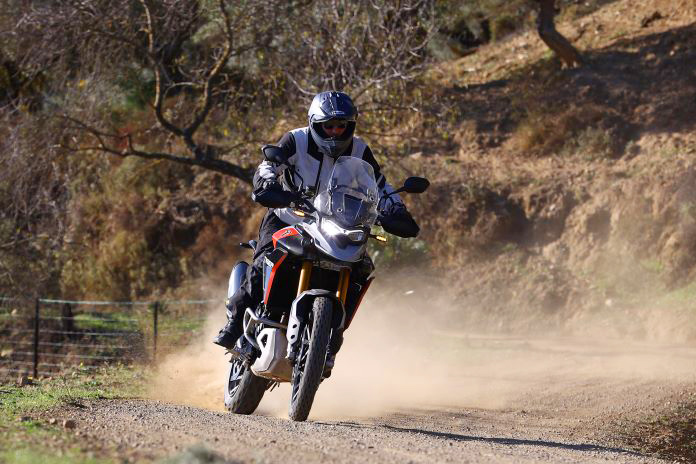
Perhaps the only caveat to lauding the Rally Pro is that it might not be as agile in technical terrain as the KTM 890 Adventure, Husqvarna Norden 901, or some smaller-displacement bikes like Yamaha’s Ténéré 700 or Suzuki’s V-Strom 800DE. But the Tiger has an edge as a streetbike, especially with its comfort and convenience features.
Related: 2023 KTM 890 Adventure First Ride Review
We were also treated to a performance by Triumph’s factory racer Iván Cervantes. The Spaniard’s brilliance on a large ADV was mind-blowing, riding it around as if it was just a big dirtbike. This shouldn’t be a surprise, as Cervantes has ridden Tiger 900s to victories in the 2022 Baja Aragón Rally Trail Class, the Hard-Trail class in the 1000 Dunas Raid, and the Maxi-Trail class in the Bassella Enduro. His talent on a motorbike is exceptional and inspiring – and humbling.
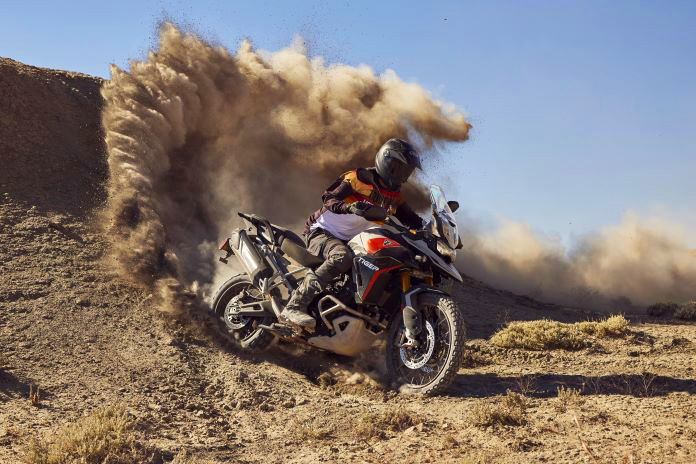
Dusting Off
It’s a little anticlimatic to review a bike I already liked after it’s been improved, but that’s the case with the Tiger 900 family. It was previously a platform worth parking in your garage, and now it’s even better.
The new TFT instrumentation pleases eyes and is easy to navigate, the ergonomic triangle with comfier seats allows for long days on the road, and heated touchpoints keep riders warm even if ambient temperatures would indicate otherwise.
Most impressive is the invigorated character of the Tiger’s T-plane engine. It growls with a guttural bark rather than singing like its Triple-powered stablemates, and its newfound top-end lunge is delightful. A smoothly operating up/down quickshifter keeps the motor on the boil and ready for action.
The only caveat to a full-throated endorsement of the Triumph Tiger 900 is the bounty of appealing competitors in the class. Along with the aforementioned KTMs and Huskys are Ducati’s Desert-X and Suzuki’s V-Strom 1050, plus Honda’s amiable Africa Twin and the new Transalp. In terms of value, it’s tough to beat Yamaha’s recently upgraded T7, and BMW will soon give us a ride on its overhauled F 900 GS.
Riders looking for a soft-roader ADV can get the base GT for a reasonable $14,995 or take a jump to $16,895 for the fully featured GT Pro. The Rally Pro has an MSRP of $17,395. Shoppers for middleweight adventure bikes are truly spoiled for choice these days.
2024 Triumph Tiger 900 GT Specs (Rally Pro)
- Base Price: $14,995 ($17,395)
- Warranty: 2 yrs., unltd. miles
- Website: TriumphMotorcycles.com
ENGINE
- Type: Liquid-cooled, transverse in-line Triple, DOHC w/ 4 valves per cyl.
- Displacement: 888cc
- Bore x Stroke: 78.0 x 61.9mm
- Compression Ratio: 13.0:1
- Valve Insp. Interval: 18,000 miles
- Fuel Delivery: EFI w/ throttle-by-wire, 44mm throttle bodies x 4
- Lubrication System: Wet sump, 3.9 qt. cap.
- Transmission: 6-speed, cable-actuated slip/assist wet clutch
- Final Drive: Chain
CHASSIS
- Frame: Tubular-steel trellis frame, aluminum subframe & swingarm
- Wheelbase: 61.3 in. (61.1)
- Rake/Trail: 24.6 degrees/4.0 in. (24.4/4.6)
- Seat Height: 32.3-33.1 in. (33.9-34.6)
- Suspension, Front: 45mm inverted fork, fully adj., 7.1 in. travel (9.4)
- Rear: Single linkage shock, w/ spring preload and reb. adj., 6.7 in. travel (fully adj., 9.1)
- Brakes, Front: Dual 320mm floating discs w/ 4-piston radial monoblock calipers & cornering ABS
- Rear: Single 255mm disc w/ 1-piston caliper & cornering ABS
- Wheels, Front: Cast, 2.5 x 19 in. (Spoked, 2.15 x 21)
- Rear: Cast, 4.25 x 17 in. (Spoked, 4.25 x 17)
- Tires, Front: 100/90-19 (90/90-21)
- Rear: 150/70-17
- Wet Weight: 483-489 lb (503)
PERFORMANCE
- Horsepower: 106.5 hp @ 9,500 rpm (factory claim)
- Torque: 66.4 lb-ft @ 6,850 rpm (factory claim)
- Fuel Capacity: 5.3 gals.
The post 2024 Triumph Tiger 900 Review | First Ride appeared first on Rider Magazine.
Source: RiderMagazine.com

